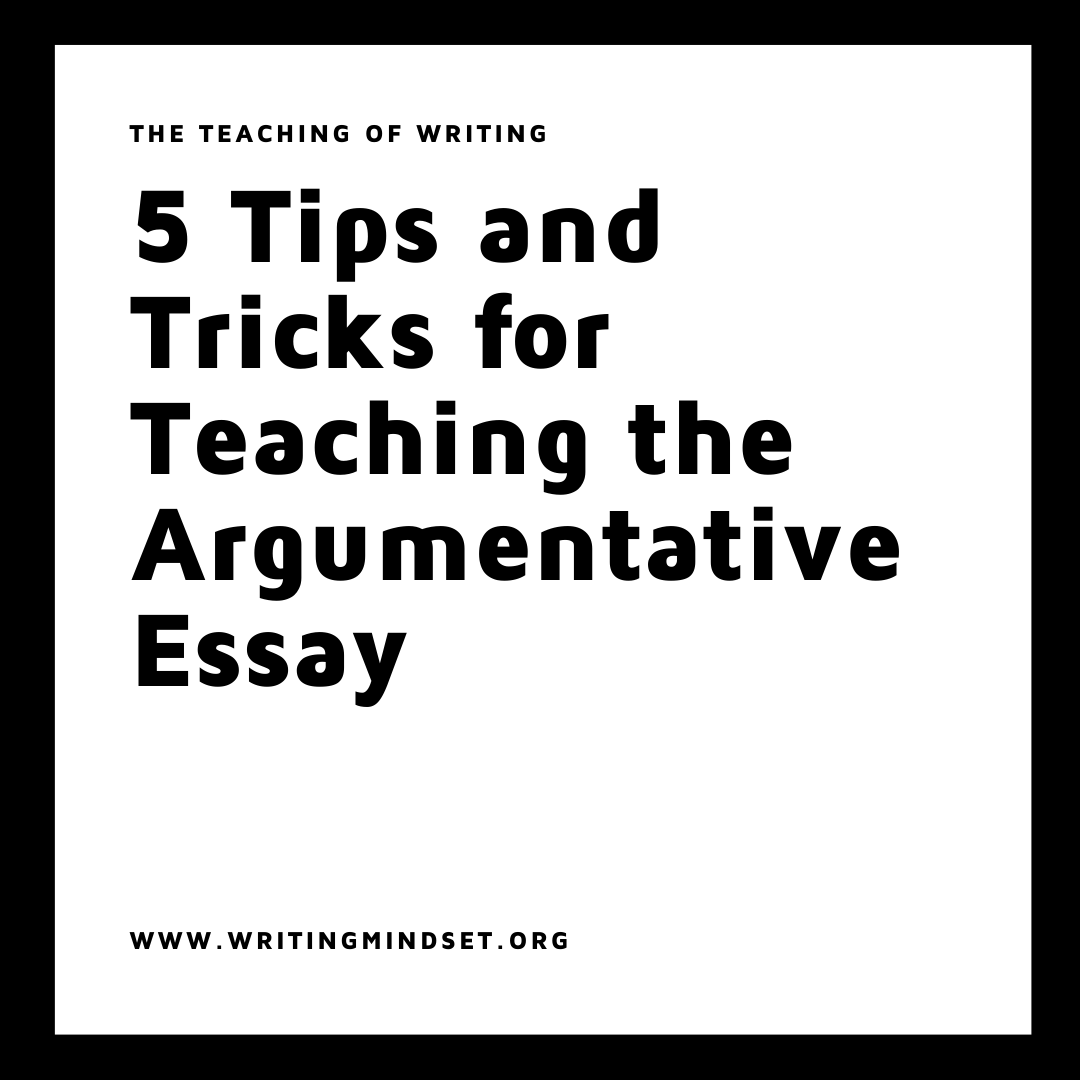5 Tips and Tricks for Teaching the Argumentative Essay
5 Tips and Tricks for Teaching the Argumentative Essay
GUEST POST
When that beautiful time of year rolls around to teach the argumentative essay to your middle school students, you might find yourself crinkling your nose and thinking, “Oh boy, let’s just get through this.”
I don’t blame you!
Teaching the argumentative essay is no easy feat. You aren’t just teaching students the flow and structure of writing, but you are also teaching them how to research, evaluate evidence, make a claim, argue, convince, and write in a formal style. Many of these skills might be new to your students, so it is important to go slow, keep it simple, and make it very clear.
Today we are going to be looking at 5 tips and tricks to help you teach the argumentative essay to your students in a fun, clear, and simple way!
Mentor Texts are Golden
Structure is Everything
Research is Key
The Little Details Matter
Checklists are a Must
Mentor Texts are Golden
A great way to introduce the argumentative essay is through mentor texts. Mentor texts help students see distinct elements of craft, tone, and structure within a piece. They also provide students with an example of what they are expected to write.
Argumentative essay mentor texts show students how different authors convince readers to adopt their stance, share their values, or accept their argument through a formal style of writing.
In addition to example pieces, mentor texts can also be used as a pre-assessment. Can your students identify the hook, thesis statement, claim, convincing research, counter-arguments, and conclusion in the argumentative text? Can they compare and contrast an opinion piece with an argumentative piece? Can they distinguish between informal and formal voice?
Using this pre-assessment strategy will help determine what your students already know and what they need to learn, or even relearn in terms of basic essay techniques.
Structure is Everything
The argumentative essay is the epitome of structure. The structure can make or break an essay. A student may have an outstanding argument, but if their piece is not clear, structured, and to the point, it will lose a lot of its credibility and conviction.
The key is to teach your students each element of the argumentative essay thoroughly before moving on. This means making sure that they are experts on writing hooks, introducing background information, building a thesis statement, making claims and supporting their claims with research, and crafting a powerful conclusion even before diving into writing their own essays.
The Basic Structure of the Argumentative Essay
Introduction
-Hook- Capture the attention of your reader
-Background information- Introduce, explain, or define the topic
-Thesis statement- State your claim
Body Paragraphs
-Body paragraph 1- Topic sentence with a reason for the claim and supporting research
-Body paragraph 2- Topic sentence with a reason for the claim and supporting research
-Body paragraph 3- Counter argument to claim and reasons why it is not as valid, good, or
reasonable.
Conclusion
-Restate the thesis statement- State your claim again in a different way
-Call to action- What do you want your readers to do with this information?
A helpful tip is to teach these different elements by using the E.P.G.I. strategy. This stands for…
Examples- Provide tons of examples and demonstrations of each element
Practice- Have students practice the different elements from the examples
Guidance- Guide the students into coming up with original content
Independence- Set the students loose to formulate their own essay elements
Yes, there are a lot of essay elements to teach independently. However, if your students can nail each of these elements, their “essay writing career” will get a whole lot easier! Once they understand the basic structure of essays, they will be able to craft their own argumentative essays in no time.
Research is Key
An argumentative essay moves a reader to take action based on a strong claim AND credible research to back up that claim. In addition to having research for the claim, there needs to be research for the counter-argument as well (to make it a true argumentative essay).
This can be a little tricky to teach, considering that research is a separate skill all by itself. However, there are some simple and clear tips that will hopefully make teaching researching a little easier.
Tips for Researching
Have a specific topic and claim
Choose articles that fit your topic well
Summarize your research in a few sentences (don’t forget to cite!)
Choose the most convincing research that matches your specific claim
Find a broad argument against your claim
State the argument and counter it with reasoning or research
These tips will help your students get started with researching. Remember to have your students choose specific topics with a specific claim. It will make researching and formulating their own essay easier. Don’t forget, for an argumentative essay, it is important to be as clear, thorough, and convincing as you can be!
Details Matter
When writing an argumentative essay, the details matter! It is so important to remember the tone, formal style, and convincing vocabulary in this particular type of essay. The best way to teach these techniques is by examples, examples, and more examples.
Have your students read through mentor texts and get a feel for the tone, style, and vocabulary. Why does the formal style make the argument more credible? Why does the vocabulary convince you? What audience is the author appealing to with their tone of voice? Why do some authors use first-person?
A trick for implementing details in an argumentative essay is to add them in during the revision stage. During this time, the students can…
Replace certain words with convincing/urgent vocabulary
Revise the sentence structure for a bigger punchline
Use a variety of descriptive words
Try replacing common words with more academic vocabulary
Take out the, “I think” and “probably,” and replace it with “I believe,” “research shows,” etc.
Adding the details later will help students focus on the structure and content first, helping them create a solid foundation. Then, it will be easier to add the tone, formal style, and convincing vocabulary.
Checklists are a Must
One of the most helpful tricks that I have found when writing any type of essay is to have a checklist for the students to follow. This can be in the form of a rubric, essay template, or bulleted notes.
Why does this make a huge difference?
The students know exactly what they need to include in their essay
It reduces the confusion and mountain of questions
It helps the students visualize the essay structure at all times
It provides a scaffold when they are first learning a new style of essay
In conclusion, if you go slow, keep it simple, and make it VERY clear, your students will get the hang of the argumentative essay in no time. And maybe, just maybe, you will look forward to teaching the argumentative essay from here on out!
About the Author
Sara’s Blogger Information
Visit Sara’s Blog, Writing Up Dreams
My name is Sara and I am a teacher, wife, blogger, and published researcher. Soon after I had started teaching, I realized how much I enjoyed creating lesson plans and units- especially for essay writing! When my students went from, “I don’t know what to write” to, “Don’t worry Mrs. Holt, I got this!,” I knew I had found my calling. My passion is to provide you with easy, effective, and no-prep essay writing units to make your life a little bit easier while making your students’ writing skills a whole lot stronger.




